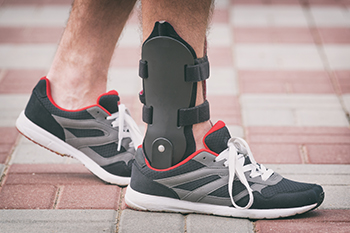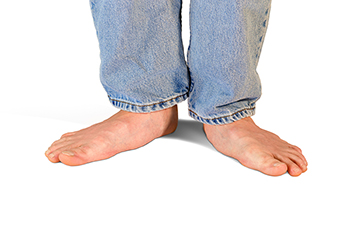

When it comes to finding the right ankle brace, it's essential to consider your specific needs and condition. Lace-up support braces are tailored for demanding athletes during their sports activities. These braces offer a custom fit, making them easy to put on and remove. For daily use and mild support, ankle braces in the form of sleeves or wrap-arounds may be helpful. These braces offer compression and stability, making them perfect for those with chronic ankle instability or who are recovering from mild sprains. For high-impact sports or activities that involve quick lateral movements and jumping, ankle braces that offer moderate to maximum support are a choice. These braces often feature side stays to prevent ankle rolls. Maximum support braces even come with semi-rigid shells to prevent further injury while allowing normal movement. In cases of severe injuries, fractures, or post-surgery recovery, a boot or full-shell protection brace offers ankle protection and reduces foot pressure while walking. These devices are not suitable for sports and are primarily designed for immediate recovery. To find the proper brace for your ankle recovery, it is suggested that you make an appointment with a podiatrist to determine the best choice for your specific needs.
Ankle pain can be caused by a number of problems and may be potentially serious. If you have ankle pain, consult with Dale Delaney, DPM from InStride Kinston Podiatry Center. Our doctor will assess your condition and provide you with quality foot and ankle treatment.
Ankle pain is any condition that causes pain in the ankle. Due to the fact that the ankle consists of tendons, muscles, bones, and ligaments, ankle pain can come from a number of different conditions.
Causes
The most common causes of ankle pain include:
Symptoms
Symptoms of ankle injury vary based upon the condition. Pain may include general pain and discomfort, swelling, aching, redness, bruising, burning or stabbing sensations, and/or loss of sensation.
Diagnosis
Due to the wide variety of potential causes of ankle pain, podiatrists will utilize a number of different methods to properly diagnose ankle pain. This can include asking for personal and family medical histories and of any recent injuries. Further diagnosis may include sensation tests, a physical examination, and potentially x-rays or other imaging tests.
Treatment
Just as the range of causes varies widely, so do treatments. Some more common treatments are rest, ice packs, keeping pressure off the foot, orthotics and braces, medication for inflammation and pain, and surgery.
If you have any questions, please feel free to contact our office located in Kinston, NC . We offer the newest diagnostic and treatment technologies for all your foot care needs.

Orthotics are custom-made shoe inserts designed to support and align your feet properly. They can be a game-changer when it comes to reducing foot pain and discomfort. First, custom orthotics provide added cushioning and support to your feet, which can help distribute your body weight evenly. This can alleviate pressure on specific areas, such as the arches or heels, and reduce pain associated with conditions like plantar fasciitis or flat feet. Second, custom orthotics can correct abnormal foot mechanics, such as overpronation, which is rolling your feet inward, or supination, which is rolling your feet outward. Orthotics also can help to align your feet and ankles properly and reduce strain on the muscles and tendons. In addition, orthotics can improve your posture and reduce the stress on your knees, hips, and lower back. This process can indirectly alleviate foot pain caused by poor alignment. If you're experiencing discomfort or pain in your feet, it is suggested that you make an appointment with a podiatrist to determine the type of custom orthotics you may need.
If you are having discomfort in your feet and would like to try orthotics, contact Dale Delaney, DPM from InStride Kinston Podiatry Center. Our doctor can provide the care you need to keep you pain-free and on your feet.
What Are Orthotics?
Orthotics are inserts you can place into your shoes to help with a variety of foot problems such as flat feet or foot pain. Orthotics provide relief and comfort for minor foot and heel pain but can’t correct serious biomechanical problems in your feet.
Over-the-Counter Inserts
Orthotics come in a wide variety of over-the-counter inserts that are used to treat foot pain, heel pain, and minor problems. For example, arch supports can be inserted into your shoes to help correct overarched or flat feet, while gel insoles are often used because they provide comfort and relief from foot and heel pain by alleviating pressure.
Prescription Orthotics
If over-the-counter inserts don’t work for you or if you have a more severe foot concern, it is possible to have your podiatrist prescribe custom orthotics. These high-quality inserts are designed to treat problems such as abnormal motion, plantar fasciitis, and severe forms of heel pain. They can even be used to help patients suffering from diabetes by treating foot ulcers and painful calluses and are usually molded to your feet individually, which allows them to provide full support and comfort.
If you are experiencing minor to severe foot or heel pain, it’s recommended to speak with your podiatrist about the possibilities of using orthotics. A podiatrist can determine which type of orthotic is right for you and allow you to take the first steps towards being pain-free.
If you have any questions please contact our office located in Kinston, NC . We offer the newest diagnostic and treatment technologies for all your foot and ankle needs.

Flat feet, medically known as pes planus, is a common condition where the arches of the feet appear flattened, causing the entire sole to make contact with the ground. Flat feet can be a result of genetics, injury, or muscle weakness. While many individuals with flat feet may not experience pain, others can suffer from discomfort and fatigue, especially during prolonged periods of standing or physical activity. Fortunately, there are steps that can be taken which may help to alleviate flat feet pain. This can begin by wearing supportive shoes with arch support and cushioning. Custom orthotic inserts can also provide additional support and comfort. Stretching exercises for the Achilles tendon and calf muscles can help improve foot flexibility. Additionally, performing strengthening exercises for the foot and ankle muscles can enhance arch support. By addressing flat feet and taking proactive measures, you can find relief from discomfort and improve your overall foot health. If you have flat feet, it is suggested that you visit a podiatrist who can guide you toward additional relief options.
Flatfoot is a condition many people suffer from. If you have flat feet, contact Dale Delaney, DPM from InStride Kinston Podiatry Center. Our doctor will treat your foot and ankle needs.
What Are Flat Feet?
Flatfoot is a condition in which the arch of the foot is depressed and the sole of the foot is almost completely in contact with the ground. About 20-30% of the population generally has flat feet because their arches never formed during growth.
Conditions & Problems:
Having flat feet makes it difficult to run or walk because of the stress placed on the ankles.
Alignment – The general alignment of your legs can be disrupted, because the ankles move inward which can cause major discomfort.
Knees – If you have complications with your knees, flat feet can be a contributor to arthritis in that area.
Symptoms
Treatment
If you are experiencing pain and stress on the foot you may weaken the posterior tibial tendon, which runs around the inside of the ankle.
If you have any questions please feel free to contact our office located in Kinston, NC . We offer the newest diagnostic and treatment technologies for all your foot and ankle needs.

Athletes' foot, a common fungal infection affecting the feet, can throw a wrench in the most active lifestyles. This condition is often caused by the trichophyton fungus, which thrives in warm, damp environments. The symptoms of athlete’s foot can include itching, burning, and cracked skin, particularly between the toes. As uncomfortable as this condition is, relief is within reach. Treatments can range from over-the-counter antifungal creams to prescription medications, effectively combating the infection. However, prevention is key. Keeping the feet clean and dry, wearing moisture-wicking socks, and opting for breathable footwear can create an unwelcoming environment for the fungus. Regularly changing socks, avoiding shared damp surfaces such as locker room floors, and choosing open-toed shoes in communal areas are also prudent steps toward sidestepping this irritating foot condition. If you have developed athlete’s foot, it is strongly suggested that you are under the care of a podiatrist who can guide you toward effective treatment and relief techniques.
Athlete’s Foot
Athlete’s foot is often an uncomfortable condition to experience. Thankfully, podiatrists specialize in treating athlete’s foot and offer the best treatment options. If you have any questions about athlete’s foot, consult with Dale Delaney, DPM from InStride Kinston Podiatry Center. Our doctor will assess your condition and provide you with quality treatment.
What Is Athlete’s Foot?
Tinea pedis, more commonly known as athlete’s foot, is a non-serious and common fungal infection of the foot. Athlete’s foot is contagious and can be contracted by touching someone who has it or infected surfaces. The most common places contaminated by it are public showers, locker rooms, and swimming pools. Once contracted, it grows on feet that are left inside moist, dark, and warm shoes and socks.
Prevention
The most effective ways to prevent athlete’s foot include:
Symptoms
Athlete’s foot initially occurs as a rash between the toes. However, if left undiagnosed, it can spread to the sides and bottom of the feet, toenails, and if touched by hand, the hands themselves. Symptoms include:
Diagnosis and Treatment
Diagnosis is quick and easy. Skin samples will be taken and either viewed under a microscope or sent to a lab for testing. Sometimes, a podiatrist can diagnose it based on simply looking at it. Once confirmed, treatment options include oral and topical antifungal medications.
If you have any questions, please feel free to contact our office located in Kinston, NC . We offer the newest diagnostic and treatment technologies for all your foot care needs.